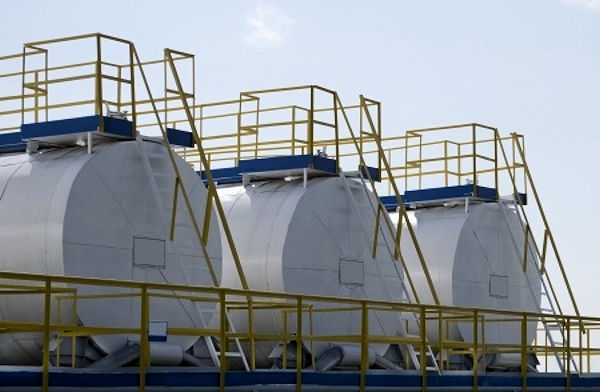Examples of Confined Spaces
Tanks
Tanks are used for a variety of purposes, including the storage of water, chemicals, etc.

They require entry for cleaning and repairs. Ventilation is always a problem. Oxygen-deficient atmospheres, along with toxic and explosive atmospheres created by the substances stored in the tanks, present hazards to workers. Heat, another problem in tanks, may cause heat prostration, particularly on a hot day. Since electrical line cords are often taken into the tank, the hazard of electrical shock is always present. The nature of the tank's structure often dictates that workers must climb ladders to reach high places on the walls of the tank.
Sumps
Sumps are used as collection places for water and other liquids. Workers entering sumps may encounter an oxygen-deficient atmosphere. Also, because of the wet nature of the sump, electrical shock hazards are present when power tools are used inside. Sumps are often poorly illuminated. Inadequate lighting may create an accident situation.
Containment Cavities
These large below-grade areas are characterized by little or no air movement. Ventilation is always a problem. Also, the possibility of oxygen deficiency exists. As well, welding and other gases may easily collect in these areas, creating toxic atmospheres. As these structures near completion, more confined spaces will exist as rooms are built off the existing structure.
Electrical Transformers
These often contain a nitrogen purge or dry air. Before they are opened, they must be well vented by having air pumped in. Workers, particularly electricians and power plant operators, will enter these transformers through hatches on top for various work-related reasons. Testing for oxygen deficiency and for toxic atmospheres is mandatory.
Heat Sinks
These larger pit areas hold cooling water if there is a problem with the pumps located at the water supply to the plant, normally a river or lake, which would prevent cooling water from reaching the reactor core. When in the pits, workers are exposed to welding fumes and electrical hazards, particularly because water accumulates in the bottom of the sink. Generally, it is difficult to communicate with workers in the heat sink, because the rebar in the walls of the structure deaden radio signals.
For more information see OSHAcademy course 816 Confined Space Safety in Construction.
Knowledge Check Choose the best answer for the question.
1-4. Oxygen deficiency is usually a problem when cleaning _____.
You forgot to answer the question!
